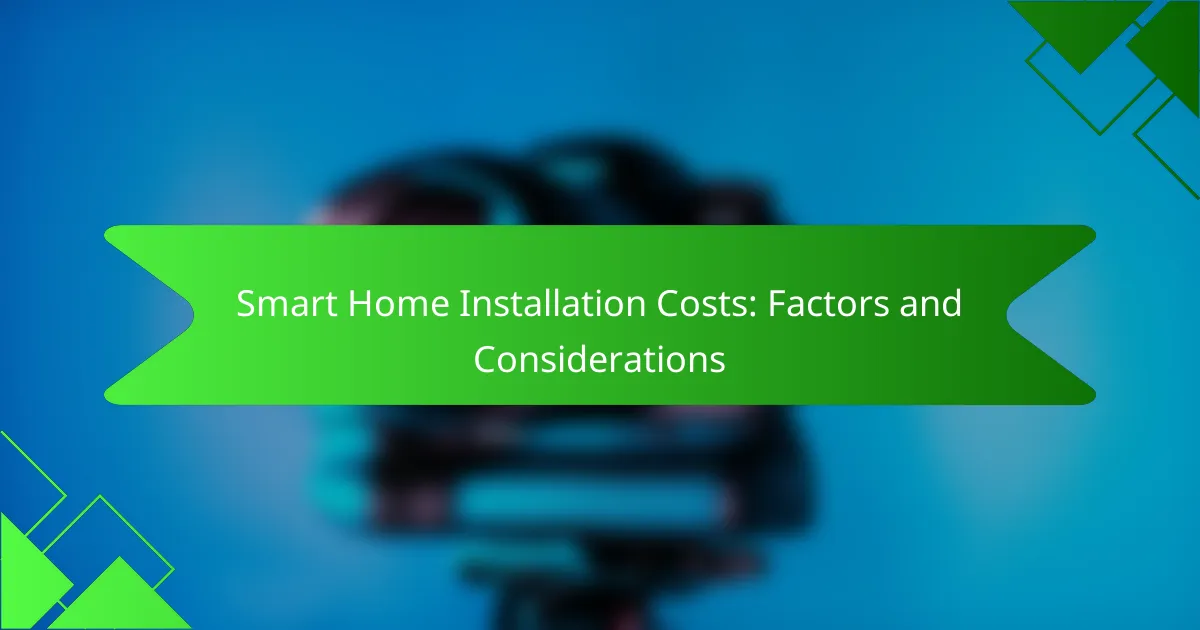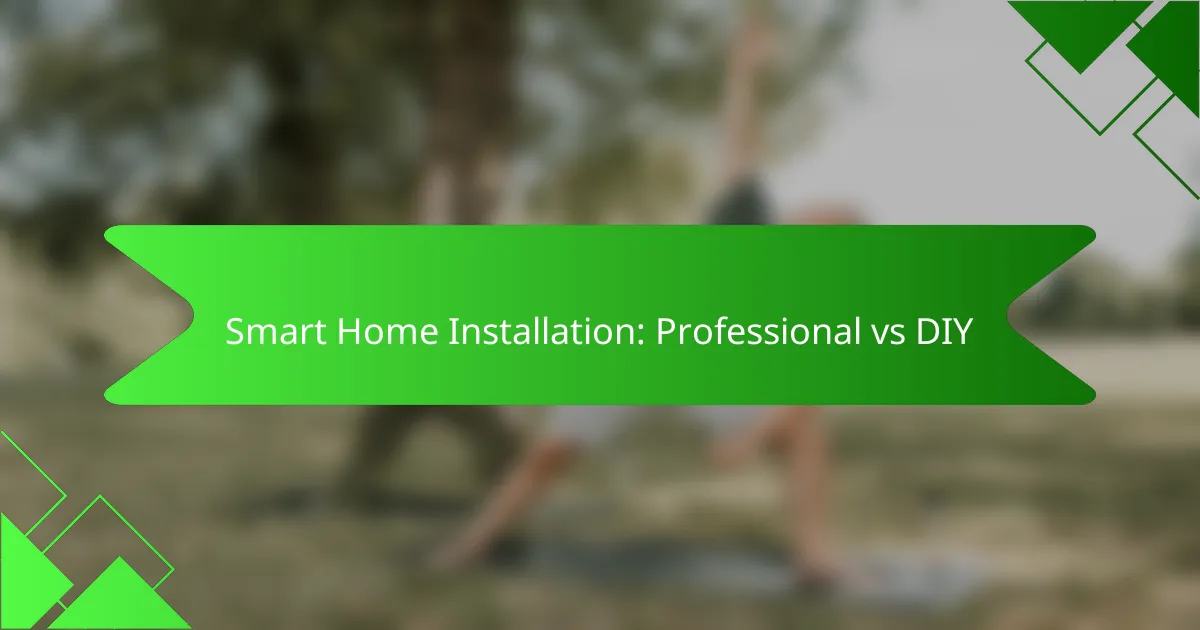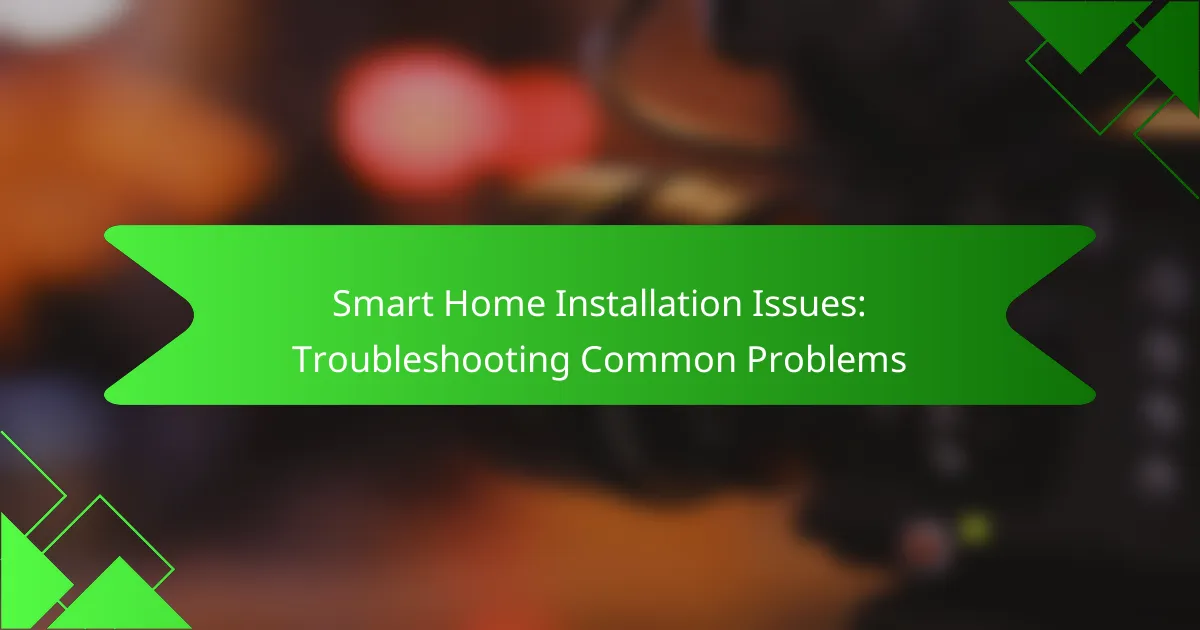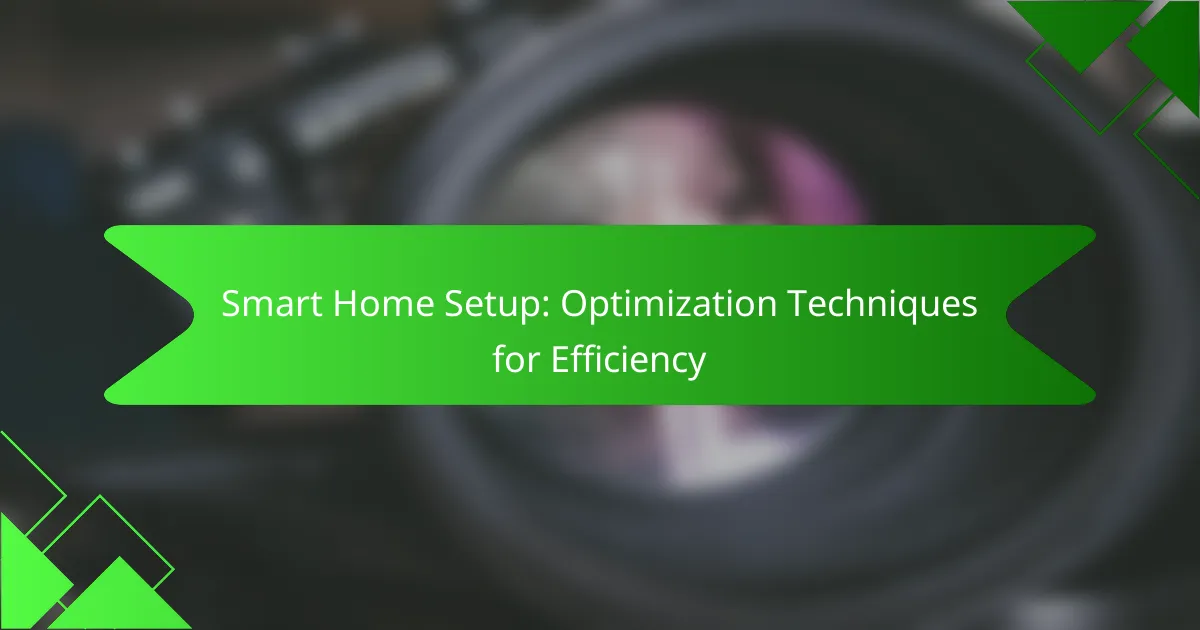Smart home installation costs can vary widely, typically ranging from a few hundred to several thousand dollars, depending on various factors. Key considerations include the size of the home, the number and type of devices being installed, and the complexity of the installation process. Understanding these elements is essential for homeowners to budget effectively and make informed decisions about their smart home systems.

What are the average smart home installation costs in the US?
The average smart home installation costs in the US typically range from a few hundred to several thousand dollars, depending on the complexity and type of systems being installed. Factors influencing these costs include the size of the home, the number of devices, and the specific technologies chosen.
National average cost
The national average cost for smart home installation in the US is generally around $1,000 to $2,500. This estimate includes basic setups like smart lighting, security systems, and smart thermostats. More advanced installations, such as whole-home automation systems, can significantly increase the overall cost.
Cost range by system
Costs can vary widely based on the type of smart home system. For instance, basic smart lighting systems may start at around $200, while comprehensive security systems can range from $500 to $2,000 or more. Home automation systems that integrate multiple functionalities often fall between $1,500 and $5,000, depending on the number of devices and the complexity of the setup.
Cost breakdown by service
When considering smart home installation, it’s essential to understand the cost breakdown by service. Installation fees typically range from $100 to $200 per hour, depending on the technician’s expertise and the project’s complexity. Additional costs may include equipment purchases, which can vary from $50 for individual devices to several thousand dollars for complete systems.
Moreover, ongoing subscription fees for services like cloud storage or monitoring can add to the total expense. It’s advisable to factor in these recurring costs when budgeting for a smart home installation.

What factors influence smart home installation costs?
Smart home installation costs are influenced by several key factors including the type of smart devices chosen, the size of the home, and the complexity of the installation process. Understanding these elements can help homeowners budget effectively and make informed decisions about their smart home systems.
Type of smart devices
The type of smart devices selected plays a significant role in determining installation costs. Basic devices like smart bulbs or plugs are generally less expensive and easier to install, while more advanced systems such as smart thermostats, security cameras, or home automation hubs may require professional installation, increasing overall costs.
For example, a simple smart light bulb can cost around $10 to $30, while a comprehensive security system might range from $200 to over $1,000, depending on the features and brand. It’s essential to evaluate the specific devices needed for your home and their respective installation requirements.
Size of the home
The size of the home directly affects installation costs, as larger spaces typically require more devices and potentially more complex wiring or setup. A small apartment may only need a few devices, while a larger house might require multiple smart hubs and devices across various rooms.
As a rough estimate, installation costs can range from a few hundred dollars for smaller homes to several thousand for larger properties. Homeowners should consider the number of rooms and the desired coverage when planning their smart home setup.
Complexity of installation
The complexity of installation varies based on the chosen devices and the existing infrastructure of the home. Some systems can be easily set up by the homeowner, while others may necessitate professional installation due to intricate wiring or integration with existing systems.
For instance, installing a smart thermostat might be straightforward for someone comfortable with basic electrical work, while a whole-home automation system could require a specialist. Homeowners should assess their own skills and the technical demands of the devices to determine whether to DIY or hire a professional, which can significantly impact costs.

How do labor costs affect smart home installation?
Labor costs significantly influence the overall expense of smart home installation. These costs can vary based on the complexity of the system, the expertise required, and the region where the installation takes place.
Average hourly rates
The average hourly rates for smart home installation can range from around $50 to $150 per hour, depending on the technician’s experience and the specific services provided. Basic installations may require fewer hours, while more complex setups could take longer and incur higher costs.
For instance, a simple smart thermostat installation might take one to two hours, while a full home automation system could require several days of work. It’s essential to get a detailed estimate before proceeding with the installation.
Regional labor cost variations
Labor costs for smart home installation can vary significantly by region. Urban areas typically have higher rates due to increased demand and living costs, while rural areas may offer lower prices. For example, a technician in a major city might charge $100 per hour, whereas one in a smaller town might charge $60.
Additionally, local market conditions and competition can affect pricing. It’s advisable to compare quotes from multiple service providers in your area to ensure you receive a fair rate for your smart home installation project.

What are the additional costs to consider?
When installing smart home systems, additional costs can significantly impact your budget. These expenses often include maintenance fees, subscription services, and potential upgrades or expansions to your existing setup.
Maintenance fees
Maintenance fees are ongoing costs associated with keeping your smart home devices functioning properly. These can include service contracts for repairs, software updates, and technical support. Depending on the complexity of your system, these fees can range from a few dollars monthly to several hundred annually.
It’s advisable to review the warranty and support options provided by manufacturers, as some may offer free maintenance for a limited time. Be cautious of systems that require frequent maintenance, as this can add up over time.
Subscription services
Many smart home devices require subscription services for advanced features, cloud storage, or enhanced security. These subscriptions can vary widely in cost, typically ranging from $5 to $30 per month, depending on the service and the number of devices connected.
Before committing, evaluate whether the features offered justify the monthly fee. Some devices may function adequately without a subscription, while others may be significantly limited without one.
Upgrades and expansions
As technology evolves, you may want to upgrade or expand your smart home system. This can involve purchasing new devices or enhancing existing ones, which can lead to additional costs. Budgeting for upgrades is essential, as prices can vary widely based on the type of technology and brand.
Consider planning for future expansions when initially setting up your system. This can help you avoid compatibility issues and ensure that your smart home can grow with your needs without incurring excessive costs later on.

How can homeowners save on smart home installation?
Homeowners can save on smart home installation by exploring DIY options, bundling services, and taking advantage of seasonal discounts. Each of these strategies can significantly reduce overall costs while still achieving a functional smart home setup.
DIY installation options
Opting for DIY installation can lead to substantial savings on labor costs, which often account for a significant portion of installation expenses. Many smart home devices come with user-friendly manuals and online tutorials that guide homeowners through the setup process.
Before proceeding with DIY, assess your comfort level with technology and tools. Some systems may require more technical knowledge, while others are designed for easy installation. For example, smart light bulbs and plugs typically require minimal setup, whereas security systems may involve more complex wiring.
Bundling services
When considering bundling, compare the total cost of individual purchases versus the bundled price. Look for promotions that may include free installation or additional devices at a discount. This approach can enhance your smart home experience while keeping expenses manageable.
Seasonal discounts
Seasonal discounts are another effective way to reduce installation costs. Retailers often offer sales during holidays or special events, providing opportunities to purchase smart home devices at lower prices.
Keep an eye on major shopping days like Black Friday, Cyber Monday, or back-to-school sales. Signing up for newsletters from smart home brands can also alert you to exclusive discounts and promotions. Timing your purchases around these events can lead to significant savings.
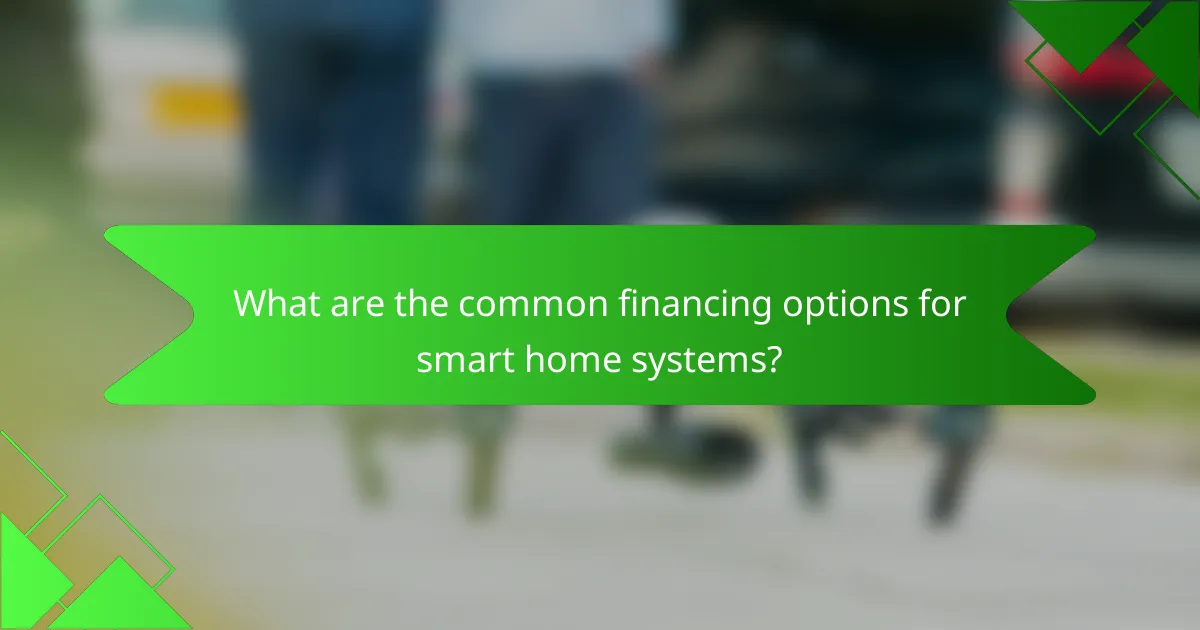
What are the common financing options for smart home systems?
Common financing options for smart home systems include personal loans, credit cards, and home equity loans. Each option has its own advantages and considerations, making it essential to evaluate which fits your financial situation best.
Personal loans
Personal loans are unsecured loans that can be used to finance smart home installations. They typically offer fixed interest rates and predictable monthly payments, which can help with budgeting.
When considering a personal loan, check your credit score, as it can significantly impact the interest rate you receive. Loan amounts can vary widely, often ranging from a few hundred to tens of thousands of dollars, depending on the lender and your creditworthiness.
Be cautious of fees associated with personal loans, such as origination fees or prepayment penalties. Always read the fine print and compare offers from multiple lenders to ensure you get the best deal.






